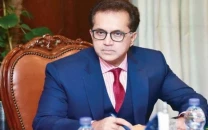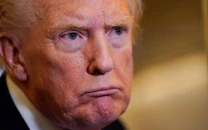India’s Sikh problem receives global attention
The Sikh problem came to the attention of the world in a way that India and its prime minister least expected

The Sikh problem came to the attention of the world in a way that India and its prime minister least expected. The allegation by Justin Trudeau, the Canadian Prime Minister, in a speech on September 17 at the Canadian national assembly made an allegation that proved to be a bombshell.
The prime minister said that the Indian government may have been behind the assassination of Hardeep Singh Nijjar, 45, who had migrated to Canada and acquired Canadian citizenship. He was born in the city of Jullundur in north Punjab.
Jullundur was a centre of Sikh politics. He married in Canada and had two sons. Nijjar became active in the 770,000 Sikh diaspora in Canada and was leading those in his community who were working for the secession of the Indian state of Punjab which they wished would become an independent state of Khalistan. In a complaint recorded in 2018, India’s premier investigative agency, RAW, accused him of “conspiracy and planning to carry out a major terrorist attack in India”.
It also alleged that he planned to violently attack gatherings of the nationalist right-wing organisation Rastriya Swayamsevak Sangh, RSS, which is the basis of support of India’s Prime Minister Narendra Modi. A veteran Punjabi journalist, Jagtar Singh, said that Nijjar was little known in the Indian Punjab and that in decades of covering Punjab he “had never heard of him”.
That said he was well known in Canada. Trudeau’s speech followed weeks of behind-the-scenes contact with allied nations over the killing, alleged to have been carried out by two men who were reported to belong to the Indian intelligence service known by its acronym, RAW, which stands for the Research and Analysis Wing of the Indian Ministry of External Affairs.
Nijjar was visiting Guru Nanak Sikh Gurdwara where he was the president. The temple was located in the city of Surrey in British Colombia.
The Canadian government expelled an Indian diplomat identified as the senior intelligence officer at the
Indian embassy in Canada. These moves sent relations between the two countries tumbling toward their lowest point.
India reacted by expelling a Canadian official from the embassy in New Delhi. Weeks before the statement by Trudeau, Canada had asked its Western allies including Washington to publicly condemn the killing, but the requests were turned down.
The Canadian request landed Washington with a tricky problem. “We have been in close contact with our Canadian colleagues,” a senior Statement Department official said on September 19 in a press briefing. “We’re quite concerned about the allegations. We think it is important that there is a full and open investigation, and we would urge the Indian government to cooperate with the investigation.”
The American action was tempered by the close relations it has cultivated with India. The United States and India established high level initiative on defence and emerging technologies that will, among other things, promote joint production of military equipment, including jet engines, long-range artillery and armoured infantry vehicles.
“The Biden administration is likely to downplay or perhaps ignore the issue, to avoid having to choose between a NATO ally Canada and emerging security partner India, to ensure the latter’s continued assistance in countering China,” said Derek Grossman, a senior defence analyst at the Rand Corporation.
“Much will depend on how the publicly revealed facts of Canada’s investigation shake out, but if true, these allegations pose the most serious threat to India’s international reputation perhaps in its history.”
The India-Canada dispute continued to grow. On September 21, New Delhi announced it was suspending visa applications by Canadian nationals. Arindam Bagchi, the Indian foreign ministry spokesman, described the move as a technical and security issue, saying that the country’s high commission and consulates were “temporarily unable” to process visas because of security threats. Most affected by this move would by the large Sikh community in Canada.
The two countries also announced that they were reducing the size of their missions.
Sikhs have been migrating to Canada for more than a century, but the numbers increased sharply in the 1970s. A secessionist armed struggle began, seeking an independent state for Sikhs in India called Khalistan.
The Indian government’s reaction accelerated Sikh migration. Those who found their way to Canada and other western countries kept their ties with the homeland and sent money back home.
The result was the economic transformation of many rural areas in the Indian Punjab. Wrote a New York Times journalist:
“Money from locals who have gone abroad for work —non-resident Indians, or NRIs — has transformed the village, with its imposing houses, neatly tiled alleys, sewerage systems and beautified bus stop. On the highway to Bhadas [the village visited by the journalist] an outlet for Barista, a coffee chain, jostles for space with a Chicago Pizza restaurant, a SUVs zoom past.
Marble Sikh temples and billboards for emigration companies stand tall in the bustling markets. Some in the village have sold off their lands to finance sending their children abroad, many to Canada.”
One consequence of the back-and-forth between Canada and India is the reappraisal of the way Narendra Modi, the Indian Prime Minister, was conducting himself both inside his own country and now in the world outside.
He has alienated the non-Hindu segments of his country’s citizenry that make up 20 per cent of the population.
“Four leaders turning the world upside down” was the title of the column written by Thomas Friedman and published by The New York Times on October 4, 2023.
Grading the world leaders, he wrote, “I am talking about Vladimir Putin, Xi Jinping, Donald Trump, and Benjamin Netanyahu. The four of them — each in his own way — have created massive disruptions inside and outside their countries based on pure self-interest, rather than the interests of their people, and made it harder for their nations to function normally in the present and to plan wisely for the future.”
He continued his observations by taking out the role the United States could play but is not involved in keeping the world order functioning. “America is still the tent-pole that holds up the world. We don’t always do it with wisdom, but if we were to stop doing it all — watch out. Given what’s already happening on in these three important countries, if we go wobbly, it will birth a world where nobody will be able to make plans.”
I would drop China and its leader from this list and replace them with India and Narendra Modi.
The writer is a former caretaker finance minister and has served as vice president of the World Bank


















COMMENTS
Comments are moderated and generally will be posted if they are on-topic and not abusive.
For more information, please see our Comments FAQ